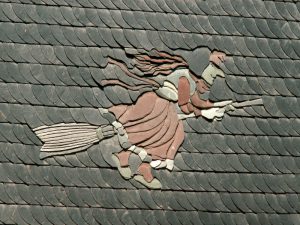Walpurgis Night (Čarodejnice)
By Erin Naillon
Walpurgis Night (Čarodejnice)
On April 30, the Czech Republic hearkens back to an earlier time in its long and varied history. This is the night – “Čarodějnice” in Czech, or Walpurgis Night – when young and old take part in the “witch-burning.”
 The ritual dates back to the times of the pagan religion in what is now the Czech Republic. The Slavs would create a figure to represent the goddess Morana, who represented both winter and death, among other things. The figure was burned, and the ashes were thrown into a body of water to show that the people were heartily sick of winter and wanted spring now, please.
The ritual dates back to the times of the pagan religion in what is now the Czech Republic. The Slavs would create a figure to represent the goddess Morana, who represented both winter and death, among other things. The figure was burned, and the ashes were thrown into a body of water to show that the people were heartily sick of winter and wanted spring now, please.
In later centuries, the focus shifted from burning a figure of a pagan goddess to burning a real, live-soon-to-be-dead human being – over and over again. Witch hysteria raged throughout Europe for centuries, turning scores of people into ashes before it was through. It was far more convenient to blame a tangible entity for a long winter, so a “witch” was provided for burning in order to bring spring. During the 17th and 18th centuries, it was believed that April 30 was the date on which witches burned Christian symbols and paid tribute to the Devil. Thus, the date was fixed for a different kind of burning; huge bonfires were also lit to keep away the evil spirits. To prevent further witchcraft, brooms were thrown onto the bonfires, a tradition that continues to
day, though the original meaning is no longer applicable.
Currently, the burning of a “witch” (in effigy!) is a way of bidding a final farewell to winter and frenetically embracing spring. Bonfires roar high, and food, drink, and merriment is the day/night rules. Sausages are roasted over fires. Beer flows freely. The celebrations often last throughout the night. Earlier in the day, little girls are “uglified” so that they may enter a Little Witch competition. Personal “witches” are made and burned everywhere.
In Prague, the biggest celebration is usually the one on Petřin Hill, overlooking the city. The open area makes it a perfect venue for the crowds that gather. Any celebration, though, should be easy to find – simply look for the flames or follow the smell of sausages and beer.



